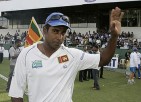Tendulkar genius on display once more
Richard Dickinson |Many things came out of India’s Test series in Australia – they tend to when these countries meet, really. There was the usual mixture of the good, the bad and the ugly – and it is certainly the ugly that will linger longest in the memory, with the SCG Test and subsequent fallout placing a terrible stain (as well as strain) on the game. One of the more positive things to come from the series, however, was the culmination of a year – just over, in fact – in which a man who was edging dangerously close to the status of “fallen idol” resurrected himself. Sachin Ramesh Tendulkar had endured his own ugly nadir in March 2006 at his home ground, the Wankhede Stadium, Mumbai, when he was booed off as his team slid to defeat (and a somewhat ignominious 1-1 tied series) against England. Now, however, the once-in-several-generations genius was finally reaffirmed.
Anyone who watched Tendulkar between August 1990 (when – at just 17 – he came gloriously of age in a match double of 68 and 119* at Old Trafford) and October 2002 (when he staved-off what could potentially have been an embarrassing defeat at Eden Gardens to West Indies with a near-faultless 176) would have found the tribulations he had endured in 2003, 2004, 2005 and early 2006 something close to inconceivable. In 95 Tests, Tendulkar averaged a fraction under 61, proving himself the man most unforgiving to bowl at if you were struggling to make the grade, and the man who presented the greatest challenge if you were seeking to prove yourself a bowler of the highest calibre. No bowler could ever be said to have truly got the better of Tendulkar, though two of the very best, Allan Donald and Glenn McGrath, came close.
So why was it, then, that this phenomenal batsman fell so badly into such a slump? It was, after all, an age when many willow-wielders were gorging themselves silly on flat pitches and almost roundly weak bowling attacks. Almost inevitably, there was a fair element of misfortune. First, India played two Tests in New Zealand in the December of 2002. The pitches were green and hard. Few batsmen stood a chance: in the entire series, the teams amassed 1072 runs for 66 wickets (an average of 16.24 per wicket). Under these circumstances, Tendulkar did well to score 100 in his four innings. The problems really started in the return series: the surfaces offered nothing to bowlers of any kind, yet Tendulkar could muster just 71 in 4 this time. Why was this? Perhaps it was simply that even the best have the odd inexplicable off day.
Whatever it was, matters reached crisis point in Australia, and to a large extent continued in Pakistan, and in the return series against Australia. Here was where the real worries surfaced: it emerged Tendulkar was suffering from tennis-elbow, and required an operation. The pressures of the calendar simply did not allow for such a thing, however, and it would be pure folly to suggest that the discomfort did not contribute to a run of 13 single-figure scores in 20 innings, between the First Test at home to New Zealand and the First Test at home to South Africa a year later. Somewhat inevitably, the great man could not be kept completely down, and in another 3 of these 20 innings, he compiled 495 runs without being dismissed, and also played an underrated cameo 55 in a low-scoring thriller (his side won by 13 runs) at his home ground against Australia. These 4 innings, though, did little to dispel the notion that Tendulkar was struggling, badly.
He finally found time to have the operation on his elbow at the start of 2005, and at first it appeared the surgery had corrected the problems: he reeled-off 386 in his next 7 knocks, just twice falling for less than 40. But all was still not right, and now the alarm-bells seriously begun to ring: his next 11 innings, all in the subcontinent, all on flat pitches and most against bowlers offering little venom, brought him a top-score of just 34. Had his team been winning comfortably, something might have been forgiven, but India lost in Pakistan and somehow failed to see-off a second-string England at home. For the first time in his career, a nation which had idolised him for over a decade was beginning to contemplate the possibility of it being in their team’s best interests to drop him from the side.
Just what Tendulkar did between March and December 2006 may never be known. Perhaps he did nothing: perhaps he never felt anything was wrong. Who knows? Maybe he was correct to think that. Either way, the Tendulkar who showed-up in South Africa at the tail-end of the year was a renewed and refreshed one. In the series, he scored just 199 runs at 33.16, with a top-score of 64. But here was a bowling attack which stood-out from the mundane fare which had usually been served-up since September 2001: Shaun Pollock, back to his very best; the irrepressible Makhaya Ntini; the indefatigable Andre Nel; and the menacing Dale Steyn. It was a challenge greater than Tendulkar had been served for some time. He relished it. Though his team lost the series, they forced the Proteas to fight all the way for it, and in winning their first Test ever in South Africa had notched something of an achievement in any case.
India visited England next, and once more an attack confronted Tendulkar and his team-mates that offered varied challenge: for the first time in many English summers, the red ball swung lavishly; the pitches and the atmosphere mostly remained dank, allowing the ball to move off the seam; and the bowlers put the ball in the right place. Tendulkar averaged just 38, but again he left an irrefutable mark on India’s first triumph in England for 21 years, and would almost certainly have made a century in what turned-out to be the defining victory but for a deplorable lbw decision from Simon Taufel.
It was hard to escape, still, however, the feeling that the Tendulkar of old might have punctuated these scrapping, and undeniably vital, 60s and 70s with one, maybe even two, massive scores. In the season of 2007/08, he finally managed it, after five fallow years. He started the home series against a moderate Pakistan side by being run out for 1, but followed it with 56* and 82, and then the glorious riches really begun. In four first-innings’ in Australia, he scored 62, 154*, 71 and 153. His second-innings efforts were far more modest (15, 12, 13, 13), but his efforts would have ensured a drawn series and a third consecutive performance of great note outside the subcontinent, but for the execrable umpiring in Sydney.
After a long time, we have glimpsed the real Sachin Tendulkar once more. Still not yet 35, it is conceivable that he could continue to ransack bowlers for at the very least another couple of years. Such an achievement would confirm once more that this is a player worthy of standing at the very least on relative par with all bar one who have picked-up a cricket bat since the dawn of the 20th-century. It’s been a long road, but it’s good to have you back, Sachin. May your second coming be as prosperous as your first.





Leave a comment